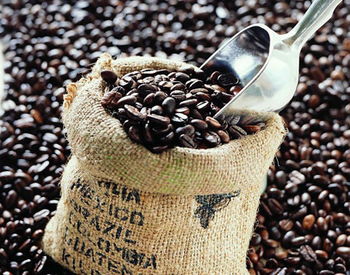Characteristics of Fine Coffee beans A brief introduction to Fine Coffee beans
1. High-quality coffee beans must be high-quality beans with no defects. It should have an outstanding flavor, not "no bad taste", but "taste particularly good".

2. High-quality coffee beans must be excellent varieties, such as the original bourbon species, mocha species and Tippica species. The coffee beans produced by these trees have unique aroma and flavor, which are far from being compared with other tree species, but the relative yield is low. In recent years, in order to pursue the ability of disease and insect resistance and increase the yield, there are many improved tree species, such as Kenya to promote a large number of high-yield rurial11 species, but the taste and quality are greatly reduced. Of course, you can't call it "boutique coffee".
3. The growth environment of high-quality coffee beans also has higher requirements. Generally grow at an altitude of 1500 meters or even more than 2000 meters above sea level, with appropriate precipitation, sunshine, temperature and soil conditions. Some world-famous coffee beans also have a special geographical environment, such as the alpine clouds in the Blue Mountains, the free shade provided by Kona's afternoon "Flying Cloud", and the volcanic ash soil in Antigua, which provide conditions for the growth of boutique coffee.
4. Manual harvesting is the best way to harvest high-quality coffee beans. That is, only mature coffee fruits are picked to prevent coffee fruits with inconsistent maturity from being picked at the same time. Because those unripe and overripe fruits will affect the balance and stability of coffee taste, boutique coffee needs to be picked frequently and carefully during harvest.
5. High-quality coffee beans are refined by water treatment. The coffee beans with less impurities can be obtained by the water washing method, but if the water quality and time are not properly controlled during the fermentation process, the coffee beans will easily be infected with the sour taste of excessive fermentation. and dry beans also need to pay attention to timely re-inspection to prevent coffee beans from being contaminated by wet ground and sundries. Processed beans should be dried in time, and the drying should also have a certain degree. Generally, the moisture content of processed beans is 11% 13%. Insufficient drying can easily make beans moldy, and excessive drying can easily affect the flavor of beans.
6. There is a strict grading system for fine coffee. In general, raw beans are preserved as "parchment coffee beans" in the form of endocarp after processing, and the endocarp is removed before export. Go through a strict grading process to ensure the uniformity of quality. And its preservation and transportation in the process of protection is very important, such as temperature and humidity control, ventilation control, avoid odor adsorption and so on, if these do not do well, then no matter how high-grade beans will no longer become fine.
Important Notice :
前街咖啡 FrontStreet Coffee has moved to new addredd:
FrontStreet Coffee Address: 315,Donghua East Road,GuangZhou
Tel:020 38364473
- Prev

Fine coffee knowledge Fine coffee novice knowledge
Specialty coffee is also known as specialty coffee. It refers to coffee made from green beans with excellent taste characteristics grown in a few extremely ideal geographical environments. Depending on the particular soil and climatic conditions in which they are grown, they have outstanding flavors. This type of coffee is carefully selected and graded, and its texture is firm.
- Next

The development trend of fine coffee drinking in four steps
Fine Coffee Drinking Coffee Fine coffee is made from fine coffee beans. If the beans used to make coffee are not specialty coffee beans, the resulting coffee solution cannot be called specialty coffee. Fine coffee is fresh coffee. Whether it's food or drink, the fresher the better, and so is specialty coffee. Coffee beans should be kept fresh before making fine coffee, including the preservation of roasted beans,
Related
- Beginners will see the "Coffee pull flower" guide!
- What is the difference between ice blog purified milk and ordinary milk coffee?
- Why is the Philippines the largest producer of crops in Liberia?
- For coffee extraction, should the fine powder be retained?
- How does extracted espresso fill pressed powder? How much strength does it take to press the powder?
- How to make jasmine cold extract coffee? Is the jasmine + latte good?
- Will this little toy really make the coffee taste better? How does Lily Drip affect coffee extraction?
- Will the action of slapping the filter cup also affect coffee extraction?
- What's the difference between powder-to-water ratio and powder-to-liquid ratio?
- What is the Ethiopian local species? What does it have to do with Heirloom native species?

